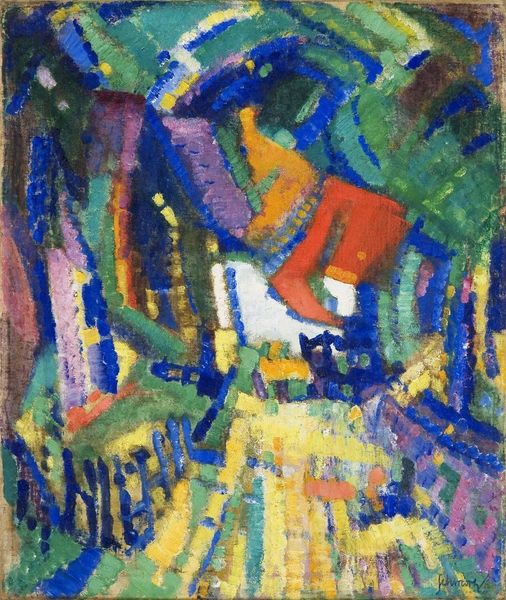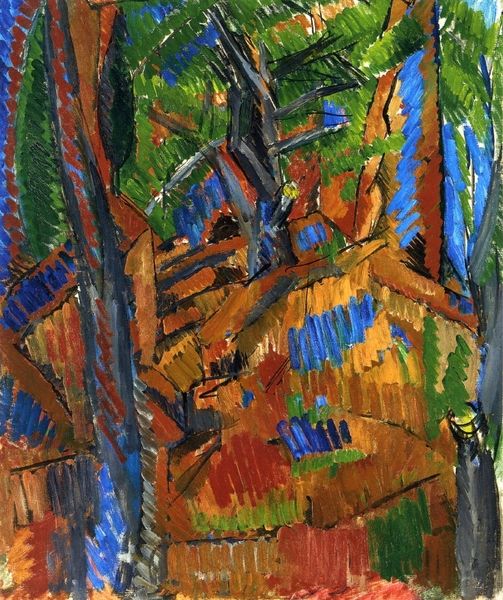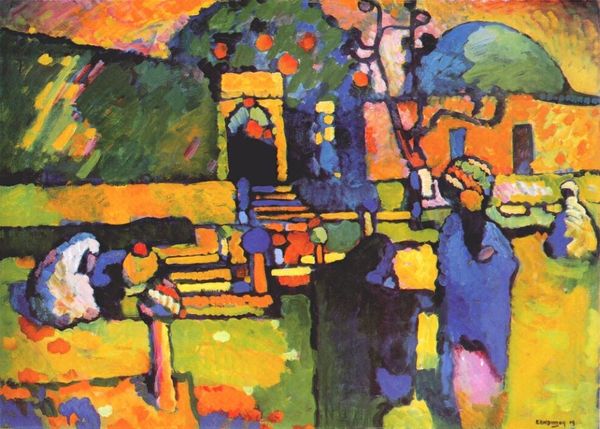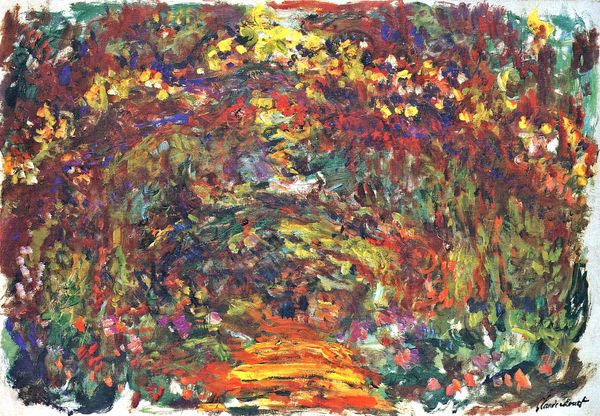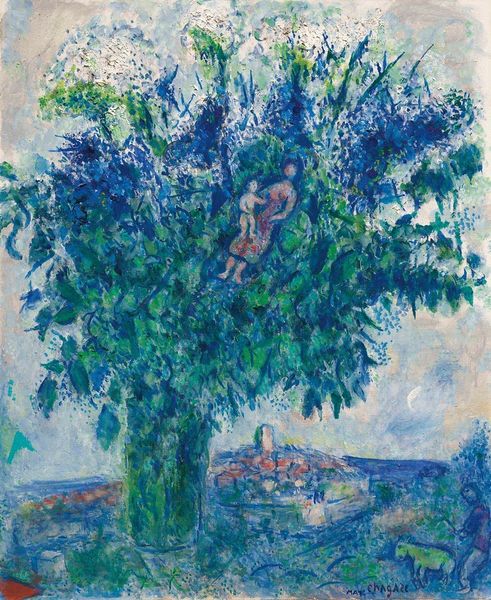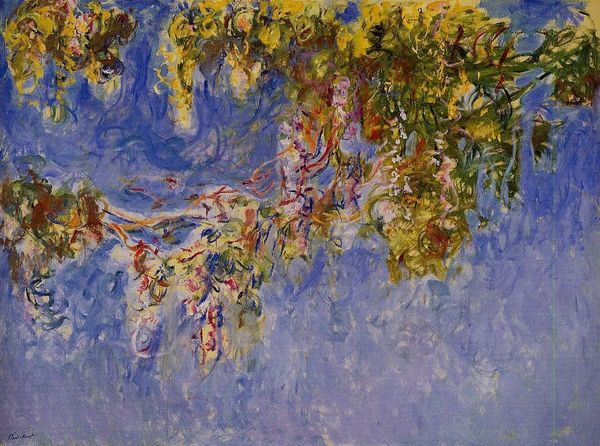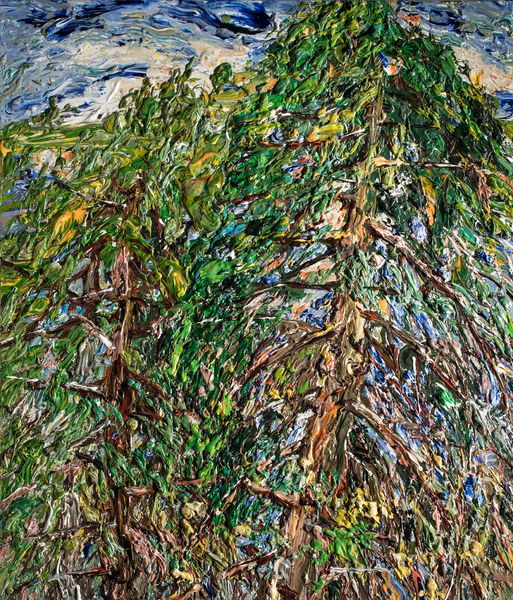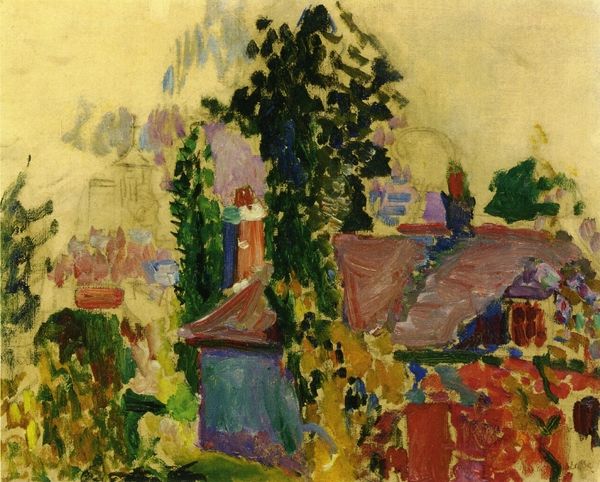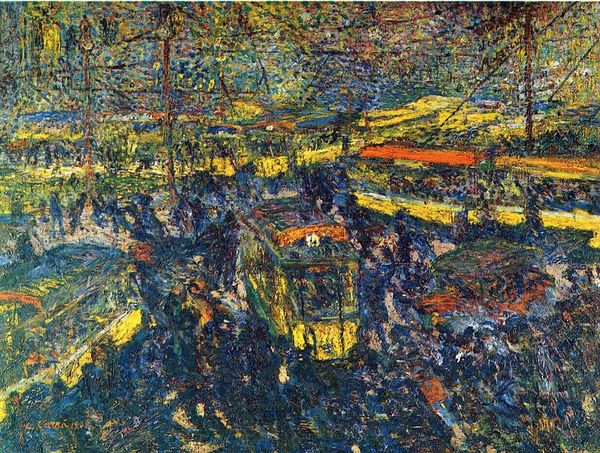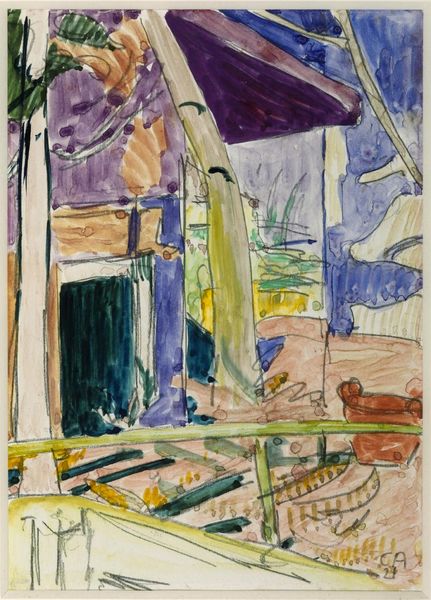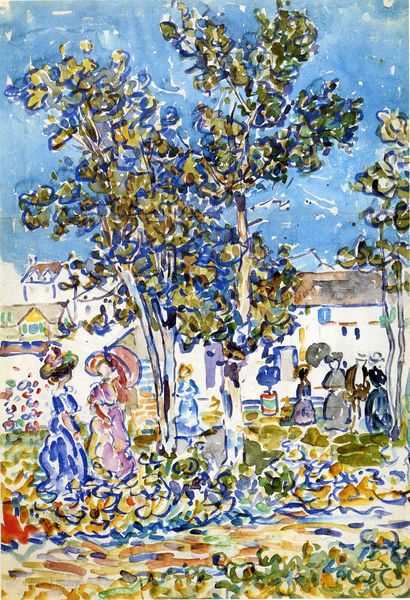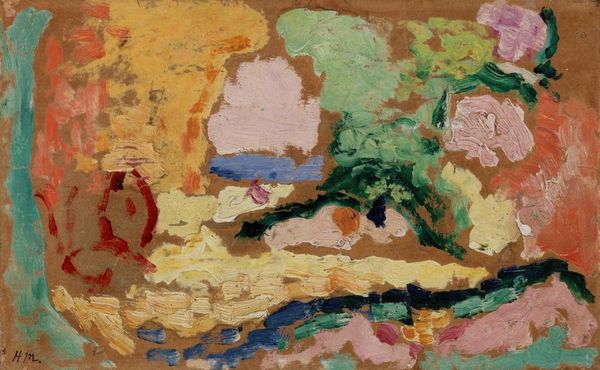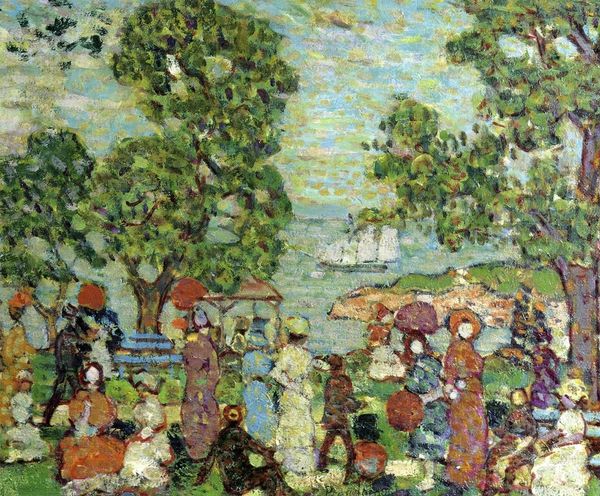
Dimensions: 128 x 152 cm
Copyright: Public domain
Curator: Welcome. We’re standing before Pierre Bonnard's “Picking Cherries” from 1946, an oil painting currently held in a private collection. What are your initial thoughts? Editor: Well, it’s incredibly tactile, isn't it? You can almost feel the roughness of the paint application, especially in the depiction of the leaves. The whole scene seems bathed in summery labour, sunshine and…cherries, of course. Curator: Indeed. Observe how Bonnard constructs form through pure colour. Notice the dappled light filtering through the foliage, rendered in strokes of vibrant yellows, blues, and greens. It exemplifies a post-Impressionist interest in the optical effects of light, almost dissolving the figures into the landscape. Editor: It makes you consider how Bonnard saw labour within a comfortable domestic space. The loose brushstrokes, along with his use of thin paint that does not appear to obscure the underlying texture, reveal his methods, as well as his perspective and potential commentary on society. How much did the post-war environment play into Bonnard’s view on human labour? Curator: That's an intriguing perspective. I’m drawn more to the compositional strategy. The flattening of space, the compressed perspective – these techniques highlight the picture plane itself, reminding us that it’s a constructed image, a representation rather than a literal depiction. Editor: Yes, but that constructed image is made from something—pigment ground with oil, applied by a human hand. Thinking about the physical labour involved and the availability of resources speaks volumes, especially when you contrast this intimate scene with the large historical canvases that were en vogue, in a society desperate for a little pleasure after the great depression and Second World War. Curator: A valuable point. It compels us to examine not just what is represented, but how it's presented, urging the viewer toward pure aesthetic experience. Editor: The method used—the application of the raw materials themselves—is vital for constructing the social message the work evokes! And the scale… it feels so private, domestic… It brings our eye down to daily acts and common settings. Curator: Bonnard masterfully integrates observation with personal expression, creating a lasting engagement with our senses. Editor: It pushes us to understand art is born not from divine inspiration alone, but through daily physical, often unseen and uncelebrated work.
Comments
No comments
Be the first to comment and join the conversation on the ultimate creative platform.
